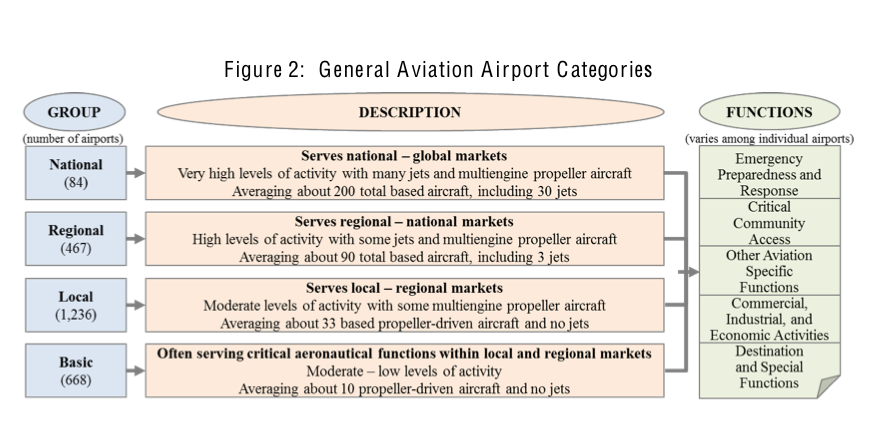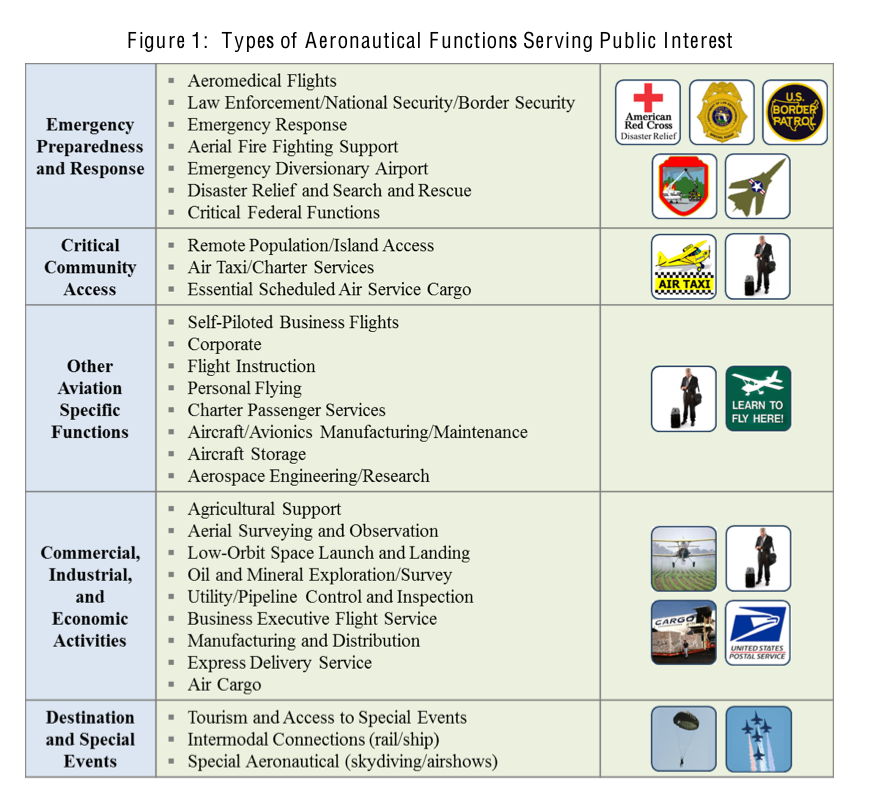FEDERAL AVIATION ADMINISTRATION
Did you know that tens of thousands of general aviation aircraft, including corporate jets, medical evacuation helicopters, and airplanes owned by individuals for business and personal use are flown in the United States? In fact, three out of every four takeoffs and landings at U.S. airports are conducted by general aviation aircraft, and most of these flights occur at general aviation airports.
Summary
There are over 19,000 airports, heliports, seaplane bases, and other landing facilities in the United States and its territories. Of these, 3,330 are included in the FAA’s National Plan of Integrated Airport Systems (NPIAS), are open to the public, and are eligible for Federal funding via the Airport Improvement Program (AIP). When an airport’s owners or sponsors accept AIP funds, they must agree to certain obligations (or grant assurances).
Most people are familiar with one or more of the 378 primary airports that support scheduled commercial air service, such as John F. Kennedy International, Chicago O’Hare International, or Los Angeles International, where U.S. and foreign airlines operate. We also rely on the other 2,952 landing facilities (2,903 airports, 10 heliports, and 39 seaplane bases) to support aeromedical flights, aerial fire fighting, law enforcement, disaster relief, and to provide access to remote communities. These 2,952 landing facilities are primarily used by general aviation aircraft and are, therefore, commonly referred to as general aviation airports. Included in this group are 121 airports that also support limited scheduled air service boarding at least 2,500, but less than 10,000 passengers each year.
In cooperation with the greater aviation community, the FAA conducted this groundbreaking 18-month review of these 2,952 landing facilities (for the purpose of this report, these landing facilities including mostly airports, but also some heliports and seaplane bases, are grouped together as general aviation airports).
We documented many important aeronautical functions that are economically and effectively supported at these general aviation airports. As shown in Figure 1, these range from emergency preparedness and response to the direct transportation of people and freight and commercial applications such as agricultural spraying, aerial surveying, and energy exploration.
Together these 2,952 general aviation airports form an extensive network and make important economic contributions to society. Many of these aeronautical functions cannot be economically supported at primary commercial service airports and other alternatives (e.g., fighting forest fires without aerial support) are less effective and sometimes more dangerous.
We divided the general aviation airports into four categories based on existing activity measures such as the number and types of based aircraft (i.e., aircraft that are stored at an airport), as well as the volume and types of flights. The four new categories are national, regional, local, and basic as shown in Figure 2. Of the 2,952 general aviation airports studied, 2,455 were grouped into the four new categories. We could not establish a clearly defined category for the remaining 497 airports. They have different types of activity and characteristics and cannot readily be described as a clear group or category. These 497 airports are currently not classified and require further study.
Read full report (PDF) here: General Aviation Airports: A National Asset
About the FAA
www.faa.gov
“Our continuing mission is to provide the safest, most efficient aerospace system in the world…We strive to reach the next level of safety, efficiency, environmental responsibility and global leadership. We are accountable to the American public and our stakeholders.”
Tags: airports, assets, FAA, Federal Aviation Administration, general aviation airports







 RSS Feed
RSS Feed